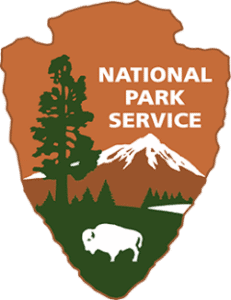Learn more about this starkly beautiful and important place in our
“Ultimate Guide to Visiting Agate Fossil Beds National Monument.“
The fossils uncovered here—some of the best-preserved skeletons in North America—offer an unparalleled glimpse into the distant past. As we begin our journey, let’s explore the incredible creatures that once roamed this ancient landscape and discover why Agate is a true hidden gem.
A Window to the Miocene: Giants of a Forgotten Era
During the Miocene Epoch, the landscape of Agate Fossil Beds was vastly different from the plains we see today. Instead of open grasslands, this region was a lush, subtropical environment filled with vast herds of prehistoric mammals. These animals, preserved in Agate’s fossil quarries, offer scientists and visitors a rare opportunity to study life from millions of years ago.
One of the standout species found at Agate is Menoceras, a two-horned rhinoceros that roamed in herds, grazing on the vegetation of the time. Although smaller than today’s rhinos, Menoceras played a similar ecological role as a dominant herbivore. The fossil remains of Menoceras at Agate are among the most complete in the world, giving scientists crucial insights into the anatomy and behavior of these ancient creatures.
Then there’s Dinohyus, also known as the “terrible pig,” though it was far more intimidating than any modern pig. Dinohyus was a massive, bone-crushing scavenger, using its powerful jaws to feed on carcasses and crush bones for nutrients. Fossils of Dinohyus found at Agate reveal its formidable size and strength, making it one of the top scavengers of its time.
What truly sets Agate Fossil Beds apart is the completeness of its fossil record. Unlike many fossil sites where paleontologists find only fragments, Agate has yielded entire skeletons, allowing scientists to piece together a much fuller picture of Miocene life.
The Discovery of Agate’s Fossil Treasures
The story of Agate’s fossils began with rancher James Cook, who owned the land where these treasures were discovered. In the late 1800s, Cook noticed unusual bones protruding from the ground and invited leading paleontologists like Erwin Barbour to investigate. Their excavations uncovered fossilized skeletons, perfectly preserved, that would make Agate Fossil Beds one of the most important paleontological sites in the world.
What makes these discoveries so significant is not just the fossils themselves but what they tell us about the ancient ecosystems in which these animals lived. Over the years, Agate Fossil Beds has continued to yield new discoveries, deepening our understanding of life during the Miocene Epoch.
Why Agate’s Fossils Matter
The fossils at Agate Fossil Beds are more than just remnants of the past—they provide critical clues to understanding the Earth’s evolutionary history. By studying species like Menoceras and Dinohyus, paleontologists can piece together how ancient ecosystems functioned and how species adapted to environmental changes.
These discoveries are also important today. By examining how these prehistoric creatures responded to changes in their environment, scientists can gain insights into how modern species might adapt to current challenges, such as climate change and habitat loss. Agate’s fossils are a reminder of the deep connections between past and present ecosystems, making ongoing research at the site more vital than ever.
What You Can Expect When You Visit
Planning a trip to Agate Fossil Beds is an opportunity to walk where ancient giants once roamed. Located about 30 miles south of Harrison, Nebraska, and easily accessible by Nebraska Highway 29, the monument offers a peaceful retreat from the crowds. While Harrison is a small town with limited accommodations, visitors looking for more options can stay in nearby Mitchell, about 35 minutes south, which has gas stations, restaurants, and small hotels. For those wanting urban amenities, the Scottsbluff/Gering area is just 15 minutes further east, offering a full range of accommodations.
At Agate, the Fossil Hills Trail is a must-do. This scenic walk takes you through the very ground where these fossils were discovered, giving you a chance to stand on the ancient hills where Menoceras herds once grazed. Along the trail, you’ll enjoy sweeping views of the Niobrara River Valley, where prairie grasses sway in the breeze and meadowlarks sing their sweet, distinct calls. If you’re lucky, you might spot other native wildlife such as pronghorns, mule deer, or burrowing owls. Inside the Visitor Center, you’ll find exhibits featuring the fossils themselves, including those of Menoceras and Dinohyus, giving you an up-close look at these incredible creatures.
A Journey Through Time with New Discoveries Ahead
Agate Fossil Beds National Monument isn’t just a place to visit—it’s a gateway to understanding the prehistoric world. The fossils found here have helped scientists unlock the secrets of the Miocene Epoch, and ongoing research continues to reveal new discoveries. Who knows what future digs might uncover? As you walk the trails and explore the exhibits, you’re not only stepping back in time but also witnessing the unfolding story of Earth’s ancient history.
Ready to explore this hidden gem for yourself? Whether you’re a fossil enthusiast, a nature lover, or simply looking for a unique adventure, Agate Fossil Beds offers something for everyone. Join us tomorrow as we dive into the life of James Cook, the rancher whose discovery helped bring Agate’s prehistoric giants to light.



